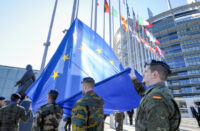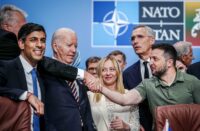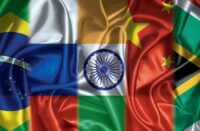On 11 July the world’s media gleefully reported that there were protests in Cuba. As expected, no context was given, just flippant explanations about shortages leading to “historic unrest.” It is astounding that the media managed to miss the fact that Cuba is in a situation of enduring the effects of economic warfare.
As the first socialist revolution in the Western hemisphere, the Cuban Revolution has always been a thorn in the side of the United States. The revolution of 1959 took place in a situation of widespread illiteracy, racial segregation, almost non-existent health and educational services, precariousness in employment, and a brutal dictatorship by America’s ally Batista. Havana was an outpost of the Mafia, who turned it into little more than a brothel and casino.
This ended with the revolution.
The small number of Cubans who profited from the selling of their country’s dignity fled to Miami, where they collaborated with the United States to destroy the revolution. In an internal US State Department memo the reasons for the blockade of Cuba were made clear: “Every possible means should be undertaken promptly to weaken the economic life of Cuba . . . a line of action which . . . makes the greatest inroads in denying money and supplies to Cuba, to decrease monetary and real wages, to bring about hunger, desperation and overthrow of government.”
Cuba was assisted through the support of the socialist camp, led by the Soviet Union; but after the counter-revolutions in 1989–1991 the country lost 85 per cent of its trade. The United States intensified the blockade throughout the 1990s, through the Torricelli and Helms-Burton Acts as well as an increase in terrorism against Cuba led by CIA front groups—Alpha 66, Omega 7, and the F4 Commandos—all co-ordinated through the Cuban American National Foundation. Thousands were killed in terrorist attacks, led by veterans of the failed Bay of Pigs invasion in 1961.
The Miami émigré community has a disproportionate amount of influence on US Cuban policy, thanks to Florida’s importance as a “swing state” in the electoral college system used in presidential elections. There are only 1½ million Cuban-Americans in Florida, many of them being recent emigrants who left for economic reasons, not necessarily counter-revolutionaries. Indeed a brave number are revolutionary, although they face intense opposition in the émigré community, controlled by the US intelligence services and former Batista collaborators. Nevertheless they do not represent the overwhelming majority of 11 million Cubans.
It is the former that were responsible for the “SOS Cuba” hashtag campaign, which manipulated small demonstrations as supposedly being a massive uprising. This proved to be a laughable example of the closed-mind nature of the counter-revolution.
The blockade prevents Cuba from gaining access to essential medical, food and energy supplies as well as basic raw materials. What makes it a blockade rather than an embargo is that it uses America’s economic power to prevent other countries from doing normal trade with Cuba. The United States, in effect, holds a gun to the head of others to make them do business with the United States rather than Cuba. It is nothing less than economic warfare.
Salim Lamrani’s book The Economic War Against Cuba (2013) gives a comprehensive insight into the blockade. It was reinstated by Trump’s government, putting an end to the brief “thaw” under Obama. This, coupled with the effect of the pandemic, particularly with the collapse in the tourist industry, has led to one of the most difficult periods in Cuba’s revolution. The United States has given millions to counter-revolutionary groups in Cuba, which have minuscule support among the Cuban people but enjoy support from CIA fronts, the likes of the National Endowment for Democracy and the US Agency for International Development (USAID).
The so-called San Isidro Movement is the result of this small number of what Cubans call “gusanos” (worms), who can’t even win support from their own people but must instead sell themselves to the empire to the north. The fact that the Miami media tried to show images of crowds in Egypt, Catalunya and Argentina as well as of revolutionaries who took to the streets to defend the revolution, in an attempt to manipulate public opinion globally, shows their lack of integrity.
In fact the sending of supplies from Mexico and Nicaragua shows how solidarity works both ways. Now the United States is the one that is isolated in Latin America, with the growth of left-wing movements on the continent. Like all cornered rats, the American empire will only react with desperation.
Socialism is not a romantic thing, where everything is perfect and everything is in abundance; but what we must acknowledge is that Cuba has a right to dignity, to sovereignty, and has an immense number of achievements and lessons for us all, that it has given enough international service and service to its own citizens to deserve the unconditional and unswerving solidarity of all truly revolutionary-minded people.






